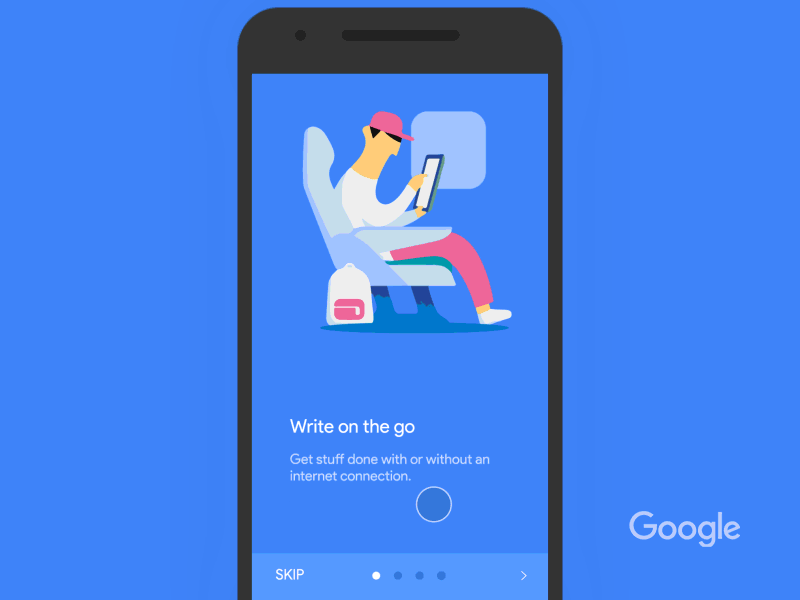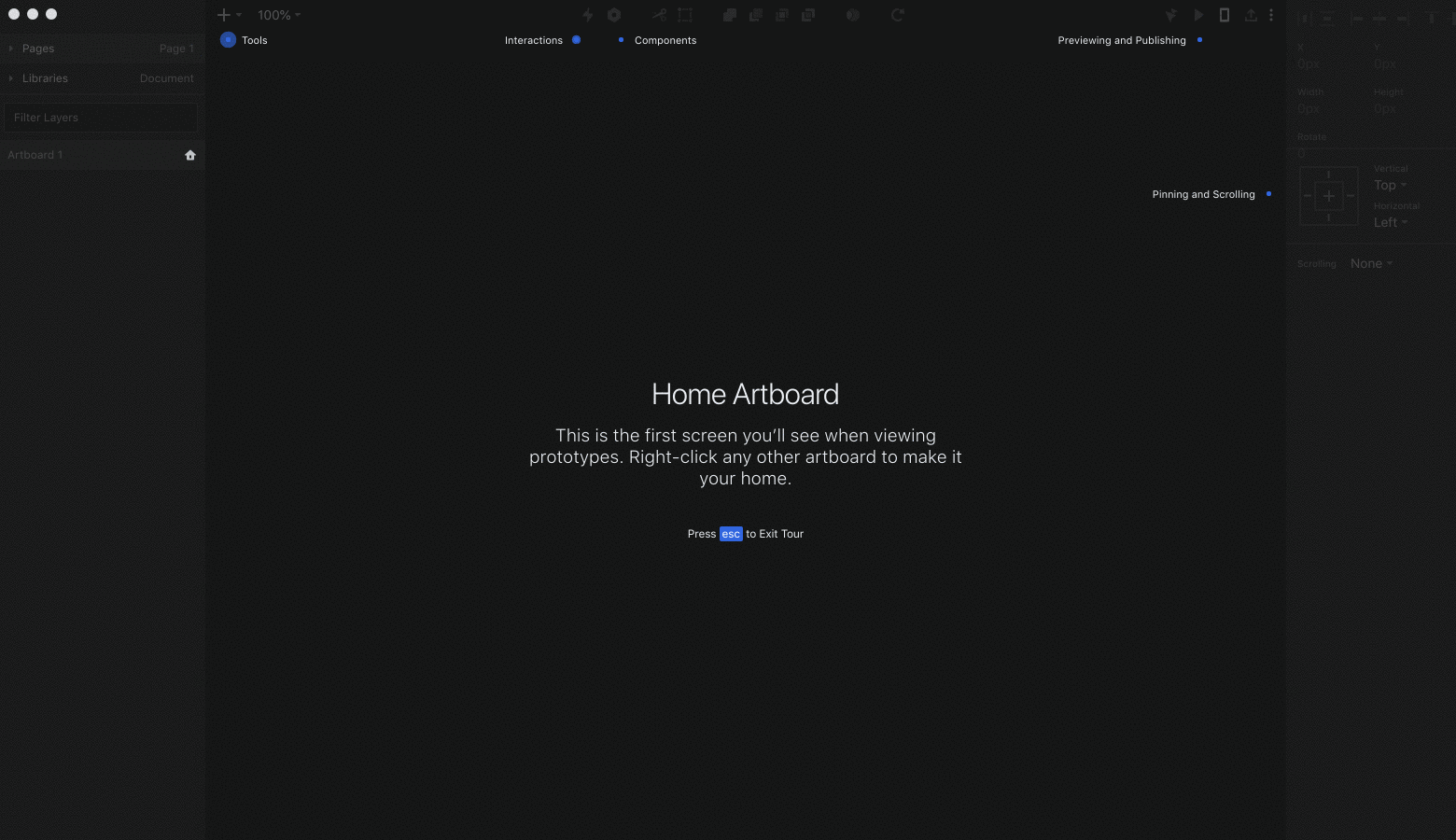Getting Acquainted: A Guide to User Onboarding Flows
First impressions are vital, and the outcome is binary—engagement or escape. The same goes for user onboarding. Learn how onboarding drives brand awareness and establishes trust with end users.
First impressions are vital, and the outcome is binary—engagement or escape. The same goes for user onboarding. Learn how onboarding drives brand awareness and establishes trust with end users.
Viktoriia is a UX/UI designer and mentor with a focus on user onboarding, conversion, and revenue-driven design.
PREVIOUSLY AT

First impressions are vital, and the outcome is always binary—engagement or escape.
When it comes to technology, the same rule applies.
With all the effort and money that goes into crafting digital products, two eye-popping stats are especially concerning: three in four apps are opened only once after being downloaded. Most of them get deleted right away, but if not, they turn into dead wood: users only engage with one out of three apps on their phones.

What’s wrong? Doesn’t user onboarding guarantee people will form deep ties to the digital products they download? Not necessarily.
There are a few issues that lead users to escape:
- Unclear value proposition
- Confusing functionality
- Stale or boring content
- Bugs
Addressing each issue in onboarding helps remove potential roadblocks and leads to engagement and healthy user interaction.
Foster Brand Awareness With User Onboarding
A common onboarding misconception is that it’s all about teaching functionality, but this is a limited way of thinking. Beyond functionality, effective onboarding makes the value of a digital product immediately clear: How does this product solve my problems and improve my life? Onboarding is also a perfect opportunity to drive brand awareness and establish trust with end users.
Here are some onboarding strategies to convey functionality and foster positive brand awareness:
On functionality
- Prioritize key things that users can accomplish with the product in order from most to least important.
- Think of a way to describe and present these things concisely.
On brand awareness
- List ways that the product’s features impact peoples’ processes, routines, and lives for the better.
On customer relationship
- Identify what sets the product apart from competitors. Why should users choose it over similar options?
Answers to these questions will provide a solid base to begin drafting user journeys and mapping user flows. This process usually requires iteration to refine each step of the way.
Apart from being empathetic to the user, it is important to keep in mind business goals. It is easy to get carried away by the “why” and forget about the “how” and “now what.”

Break the Ice with the Top 5 User Onboarding Strategies
While the ultimate goal for the user is to understand the core value of a product, the ultimate goal for a business revolves around engagement, conversion, and retention. A well considered onboarding experience will ensure success for both user and business.
Onboarding is a controlled way of communicating the core value proposition of a product. This is achieved by demonstrating benefits, features, and impact through a series of introductory steps that are designed to engage, convert, and retain the user.
What are the best methods to communicate the value of a product to users?
Growth marketer Shanelle Muffin defines five types of user onboarding practices:
- Benefit-focused
- Function-focused
- Doing-focused
- Account-focused
- A combination of all of the above
Benefit-focused Onboarding
This approach illustrates core benefits and demonstrates how a product allows the user to access them.
The benefit-focused approach is popular among service-related software. It allows companies to emphasize the benefit of the product before getting into the complexity of its software.
Telegram, the blockchain messaging app, greets the user with a set of benefits emphasizing speed, security, scalability, and affordability (it’s free).

Click to see the animated GIF version.
The benefit-focused approach is also relevant in the wellness space. It organically aligns with the concept of getting a certain benefit to contribute to one’s overall wellbeing.
Talkspace, an online therapy app, emphasizes convenience as their core benefit and adds credibility by providing stats that show how online therapy improves mental health.

Function-focused Onboarding
This approach illuminates the core features of a product and shows how to use them.
The function-focused approach is popular in SaaS product onboarding due to the complex features available within these types of apps.
Many project management tools such as Trello, Asana, and Evernote walk the user through functionality right after sign-up.
Evernote features a tutorial that explains all steps necessary to complete the task related to note creation.

Click to see the animated GIF version.
While the feature-focused approach is a great way to equip users with the tools they need to do a job, for some users, it can be overwhelming since it’s almost impossible to remember everything at a glance.
When walking through features, it is important to take incremental steps so that users can digest important information. The reward is that both user and business benefit: the user understands the core features, and the business engages their users, leading to higher conversion and retention rates.
InVision Studio highlights only the core features needed to start a project. For users’ convenience, access to the tour stays available in the options tab so that users can navigate and explore the app at their own pace.

Doing-focused Onboarding
This approach guides the user through a product’s core features and provides instructions about using them.
A doing-focused approach can be found in mobile games or highly interactive software. Apps like Slack and Clear have clearly embraced a “learn-by-doing” approach.
Clear app is a to-do app that onboards new users with a doing-focused approach. Since all of the actions that can be performed with Clear have diverse interactivity (swipe, tap and hold, pull up or down, shake, pinch, etc), learning by doing creates the most appropriate onboarding experience and sets the user up for a smooth feature adoption.

Click to see the animated GIF version.
Slack takes it even further with Slackbot, a feature that accompanies all new actions with a brief intro. Slackbot also encourages users to try out different features using friendly language such as jot something down and bring your team into Slack.

Account-focused Onboarding
This approach walks the user through account creation—including filling out personal data, connecting social accounts, etc. An account-focused approach is necessary for user-generated, data-dependent apps. Here we can think of social media, dating, and healthcare apps.
Data entry is often tedious, therefore it is important to keep the onboarding process as seamless as possible. Many apps will offer sign-up via Facebook or other social media profiles, so data such as name, email, interests, and location can be retrieved with a single tap. While signing up with social media can significantly cut down on the time required to enter data, some people still prefer to do it manually due to privacy concerns. Having an alternative option to sign up with email is a wise choice.
Hinge app offers a fun way to enter all the data needed to build a user profile without being overwhelming or intrusive. The presence of options such as Other or I prefer not to say, along with the Visible/Hidden slider, demonstrates that the company cares about user privacy.

Using a Combination of All User Onboarding Flows
Products with complex functionality often combine different types of user onboarding flows. This tactic may overwhelm users by dumping several tasks on them at once. Therefore, it is best to prioritize one of the four tactics (benefit, function, doing, or account) while using others as additional guidance.
Choosing the right tactic depends on the product and its complexity. Whichever route is chosen, it is important to make sure that the value proposition and core functionalities are clear.
Create an Onboarding Tone of Voice
Even when core values, features, and benefits are clear, it is crucial to deliver them to the user in a way that ties into the brand voice, company demographic, and any other niche factor unique to the product.
Is the product educational, entertaining, or does it address a global cause? For instance, the Gen Z tone of voice shouldn’t be used for the Baby Boomer demographic and vice versa. Being respectful to such things as race, religion, social status, gender, and income should be considered as a part of brand voice. Being in line with the culture and the audience will help the product resonate from the very first tap.
To best approach finding a tone of voice, it is recommended to start with creating a user persona. Chris Savage, founder and CEO at Wistia, attributes his success with onboarding users to an emphasis on fostering a human connection, creating genuine warmth, and bringing users into the fold.
Keep Users Flowing Towards Engagement
It is important to keep the momentum going. The term “user flow” isn’t accidental. Users should be able to easily transition from onboarding to operating a product. Make sure there are no roadblocks, dead ends, or obstructions that could hinder users from entering the product and starting the journey.
Also be sure to pinpoint engagement touchpoints to help the user build a habit. Engagement is a key factor for conversion and retention, and it starts with onboarding. There is no perfect template that guarantees a successful user onboarding experience, so it is important to have several strategies that can help convert and retain the user.
Successful Onboarding Isn’t Formulaic
Crafting an excellent user onboarding flow is vital for making a positive first impression. Just like the real world, user onboarding is meant to break the ice and trigger curiosity for further engagement. While we should certainly reference best practices and tips from experts, we must develop user onboarding journeys that are unique to our clients, their products, and their users.
Further Reading on the Toptal Blog:
Understanding the basics
Why is user onboarding important?
New user onboarding is important because it provides users with functionality training and explains the value of the digital product they’re interacting with. The best onboarding experiences don’t simply instruct, they show users how an app makes tasks easier and improves their lives.
What is onboarding in UX?
Onboarding UX is the practice of designing the experience that users encounter when they first use a digital product. Essentially, user onboarding is the first impression that helps people quickly understand the features and value of the digital product they’re using.
What is user onboarding?
User onboarding is the first interaction people will experience with an app. It’s designed to show the value of an app upfront. It introduces users to the app’s value proposition and what they can do with the app. It’s important to note that the onboarding experience should reflect a brand’s values and voice.
Viktoriia Pshenychko
New York, NY, United States
Member since February 8, 2019
About the author
Viktoriia is a UX/UI designer and mentor with a focus on user onboarding, conversion, and revenue-driven design.
PREVIOUSLY AT


